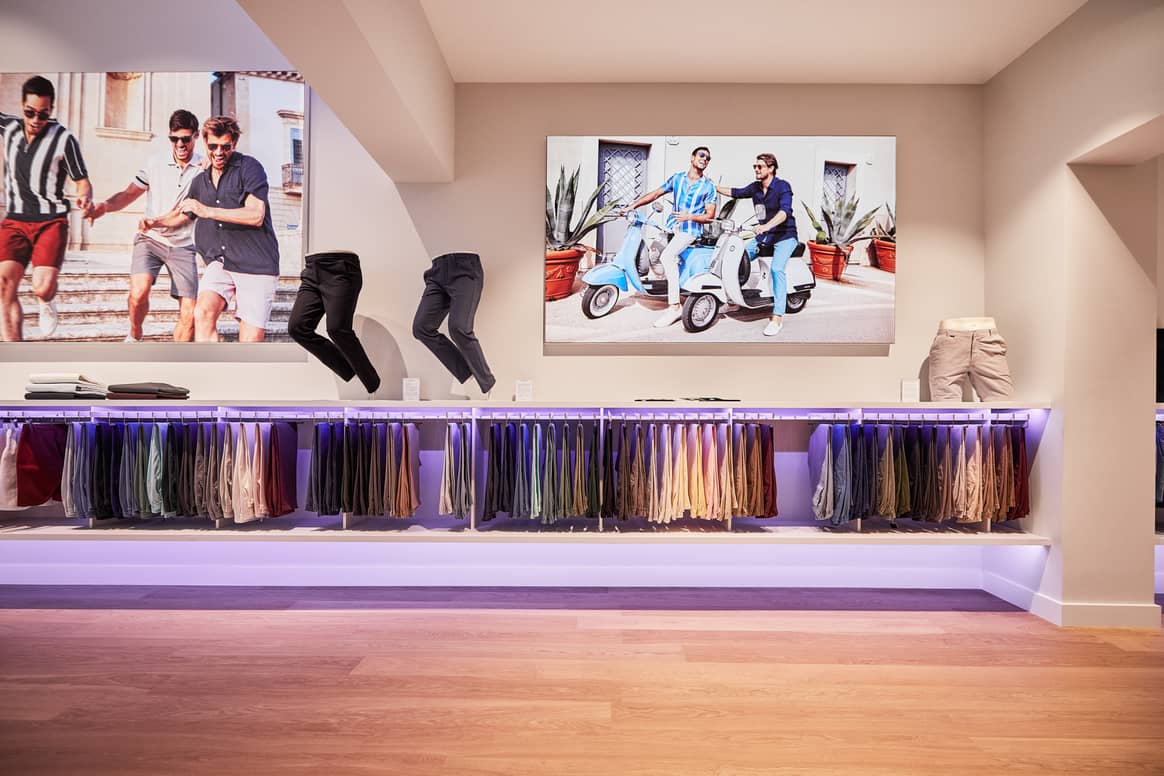At the same time, the topic of sustainability is becoming more important, as Hofstede also mentions (more on this in the following box, in paragraph 4). More consumers are aware of the impact their consumption behavior has and expect companies to make an effort when it comes to sustainability and play an active role in it. For retail and fashion stores, this means transitioning to an open organization with full transparency, where consumers gain insight into organizational policies and the production process.
The playing field has not only become more challenging for retailers because of (ultra)fast fashion companies, explains Hofstede. The advent of ‘smartphones combined with the internet’ has also changed matters. “The clothing offer got bigger, fashion became more transparent and accessible. Waiting time at the station or travel time with public transport has become shopping time through our mobile phones,” says Hofstede. “And the price-conscious consumer can find out exactly where a product is cheapest with just a few clicks. A significant difference from twenty years ago.”
The rise of the internet has also increased promotional pressure in the sector. Online giants like Zalando or Amazon can easily engage in price slashing compared to independent retailers. “The big players don’t rely on just one product group (such as clothing, editor’s note) and can sometimes attract new customers to their platform by offering deals on certain product groups, and then make their revenue from other products. They literally have more power. And buying power, by the way, which means that their selling prices can generally be a bit lower,” explains the expert. “Independent fashion stores suffer more from rising costs such as rent and staff, and they really need their margin to afford this.”
3. The problem with discounting
Markdowns put pressure on the results and margins of retailers. “I think many people do not realize that when I give a 30 percent discount, I’m actually sacrificing my own income,” said Dutch store owner Marion Mulder in a previous interview with FashionUnited.
Moreover, consumers have also become accustomed to low prices, points out Hofstede. It’s a spiral that’s difficult to escape from.
“Many consumers eventually will come to expect discounts from you as a retailer. Many retailers feel the dilemma that they can’t be too expensive and therefore have to have sales,” says Hofstede. “Especially retailers with little differentiation. If your products aren’t distinctive enough, then you’re inclined to clear excess inventory by offering discounts or clearance. Those liquid assets are, after all, desperately needed for new purchases. I think many retailers stay in the rat race for these reasons.”
The text continues below the photo
4. Yet, not everyone in fashion participates in endless discounting
Dutch fashion designer Joline Jolink said farewell to sales in 2016. She stated at the time that sales no longer served a purpose. Joline Jolink sells her women’s wear brand directly to consumers through a successful online store and her own store in Rotterdam. “Our prices are fair all year round. Thanks to precise production quantities and an original new-arrival rhythm, there’s never any surplus, and sales have simply become unnecessary,” said Jolink at the time.
Hofstede provides two more examples of brands that deal with sales more consciously. “The Dutch brand Mr Marvis offers solid, timeless, and relatively distinctive products with a variety of comfortable pants, polos, and shirts and does not do sales. The jeans brand Mud Jeans doesn’t either. They say we offer a good, sustainable pair of jeans, a timeless model of high quality, and that’s the price, even six months from now.”
“It is often the more sustainable brands with a unique and timeless range and a certain vision or purpose that refrain from sales,” explains Hofstede. “They have loyal customers who care about the product’s story, the price-quality ratio, and the sustainability efforts of the brand.
Hofstede: “Efforts in the areas of fair labor conditions, design, sustainable raw materials, and production.”
If you’re in that niche, price isn’t the most important thing,” he explains. “Do you have to compete with the fashion giants of the world that sell almost the exact same thing? Then it becomes more difficult.”
“That’s also my tip for retailers,” continues Hofstede. Ask yourself and your management team: what makes us stand out? What makes us so unique that we justify our existence and that customers, with all the options available, take the effort to buy something from us, either physically in a store or online?” According to him, posing the question is easier than answering it. “But it’s essentially what it all revolves around. If you’re doing the same as your competitor, then often only one thing remains distinctive, and that is the price. And you’re never going to win on that.”
How retailers can differentiate themselves, according to Hofstede;
1. “With the best people, who provide the best service and advice”
2. The assortment: “Is it unique, of high quality, timeless, are you different from the rest, and do you tell your own story?”
3. With the in-store experience
4. Socially responsible or sustainable business practices. “More consumers, especially Generation Z, want to shop ‘consciously.’ Like: if I buy something, it has to be good, fair, and well-made, with as little impact on the planet and people as possible,” he explains. “So, if you can build a purpose and/or a well-substantiated story around that which strengthens your brand, then that is what makes you different from others.”
He adds: “Also choose the right channels where your (potential) customers are and use influencers to convey your message. A channel like TikTok, for example, is suitable for attracting new young customers. There you can very well tell a story about why you are the best, the funniest, the nicest or most socially responsible.”


Sources:
– Interview with Henk Hofstede, Sector Banker Retail at ABN AMRO, September 14, 2023
– The FashionUnited archive and specifically sale articles by journalists Anne Buis, Esmerij van Loon and Don-Alvin Adegeest.
– The Correspondent article ‘Fast fashion is everyone’s favorite scapegoat – but that’s not always justified’, by Emy Demkes, from November 2021.
– Interview with Marion and John Mulder, owners of women’s and men’s fashion store Mulder Mode, November 30, 2022, in Waddinxveen.
– Previously published background articles.

The article was originally published at FashionUnited.nl. Translated and edited for international coverage: Vivian Hendriksz







